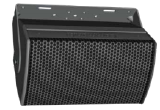Lecture Hall
This system design template describes a typical loudspeaker system for a lecture hall with steeply raked seating. This is a space usually dedicated to lectures or small theatrical screenings.
Room design
Smaller format lecture spaces can benefit from several different approaches which have trade-off advantages. This design is shown with a Front source and Distributed Source approach. Each of these approaches have their own advantages and based on the room structure and RT60, one approach may be more desirable for the intended space needs. Speaker and amplification recommendations are shown below for both of these design approaches.
Front Source [Left/Right]: Two sources spaced strategically create an acoustic “null” in the direct sound arriving to the center of the presentation area. Microphones in this area will benefit from increased GBF (Gain Before Feedback). Pay close attention to horn pattern selection to ensure that excess coverage does not reduce GBF for the presenter.
Distributed Source: To raise GBF and improve localization for most seats, an array of two or three compact models addresses each of the two seating zones. This reduces the projection distances and the direct SPL projected onto the presenter’s area. It can also help with video projector paths, sight lines, and aesthetics.
Front Source Layout:
Distributed Source Layout:
Equipment list
Below is the list of Community equipment used in this design:
Front Source Coverage:
Two (mirror image) loudspeakers cover the entire space with the least number of loudspeakers.
- 2 - Community IP8-1122 High Power 12-inch Two-Way Installation Loudspeaker; 43 Hz – 22.4 kHz, (H x V): /26 (120° x 60°), /64 (60° x 40°), /66 (60°x 60°), /94 (90° x 40°), /96 (90° x 60°), /99 (90° x 90°)
- 2 - Community IVY1122 Vertical yoke for IP-1122
- 1 - Community ALC-1604D Amplified Loudspeaker Controller: 4 Channels x 1600W + DSP and Dante (IP8-1122)
Lower power options using alternate model families: I SERIES (IP-600) and V SERIES (V2-1200, V2-1500, V2-3200, V2-3500)
Distributed Source Coverage:
Two to three compact models arrayed to cover each half (lower/upper) of the seating sections.
- 6 - Community IC6-1082T High Power 8-inch Two-Way Installation Loudspeaker; 52 Hz – 19 kHz, (H x V): /26 (120° x 60°), /96 (90° x 60°), 70V
- 6 - Community IUB1082 U-Bracket for IC6-1082
- 1 - Community ALC-404D Amplified Loudspeaker Controller: 4 Channels x 400W + DSP and Dante (IC6-1082T)
OR: Biamp XEL1200-1 Amplifier in conjunction with Tesira DSP
Alternate compact model families: I SERIES (IC-600) and V SERIES (V2-6, V2-8, V2-26, V2-28)
Amplified Loudspeaker Controllers
Biamp's line of Community Amplified Loudspeaker Controllers (ALC) are the recommended amplifiers for this application. They offer factory-optimized DSP processing, protective limiting and amplification, as well as signal routing, zone switching, and remote monitoring for virtually any Community loudspeaker application.
Standard Ethernet communication protocols allow for fast system design, system control, and remote system monitoring. Analog and Dante® inputs included in each model are assignable per channel in static or failover/backup configuration, supporting quick and easy integration into any new or existing system.
Community-authored loudspeaker presets include equalization, high pass filters, and multi-stage limiters tailored to each model, ensuring consistent sound quality and full loudspeaker protection in every application. Additionally, each Community loudspeaker preset includes loudspeaker power and impedance information, allowing the system configuration software to display the total power and impedance of multiple parallel wired loudspeakers, further reducing the time and effort required to match complete loudspeaker systems with the appropriate ALC models and output channel configurations.
In-depth control and monitoring is accomplished via ArmoníaPlus® system manager software.
Further reading
- I SERIES Installation and Operation Quick Start Guide
- I SERIES Compact Installation and Operation Quick Start Guide
- I SERIES BalancePoint Flyware Guide
- I SERIES BalancePoint Flyware Quick Reference Guide with Links
- Amplified Loudspeaker Controllers Installation and User Guide
- ArmoníaPlus System Manager Software
- Designer Tips & Tricks
- EASE Focus Templates


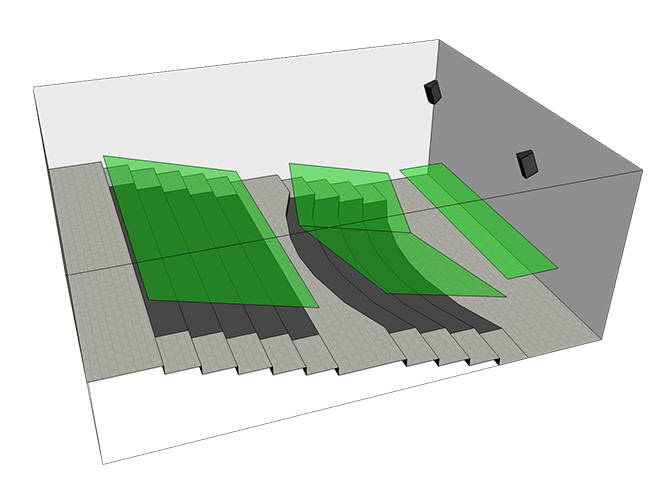
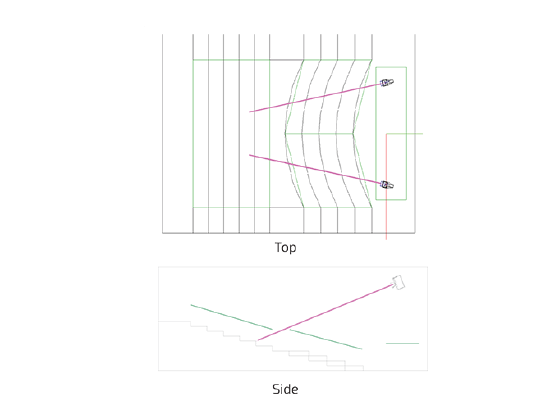
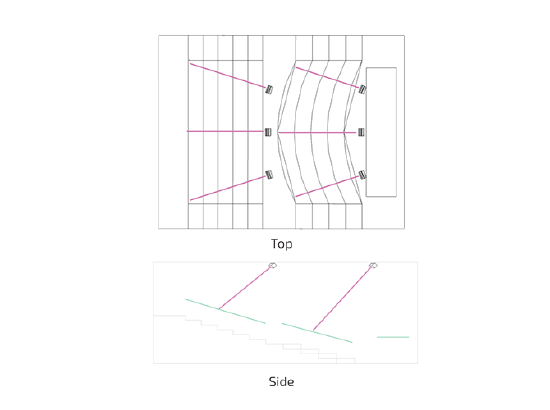

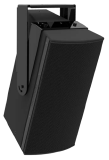
.png?revision=1&size=bestfit&width=95&height=95)
